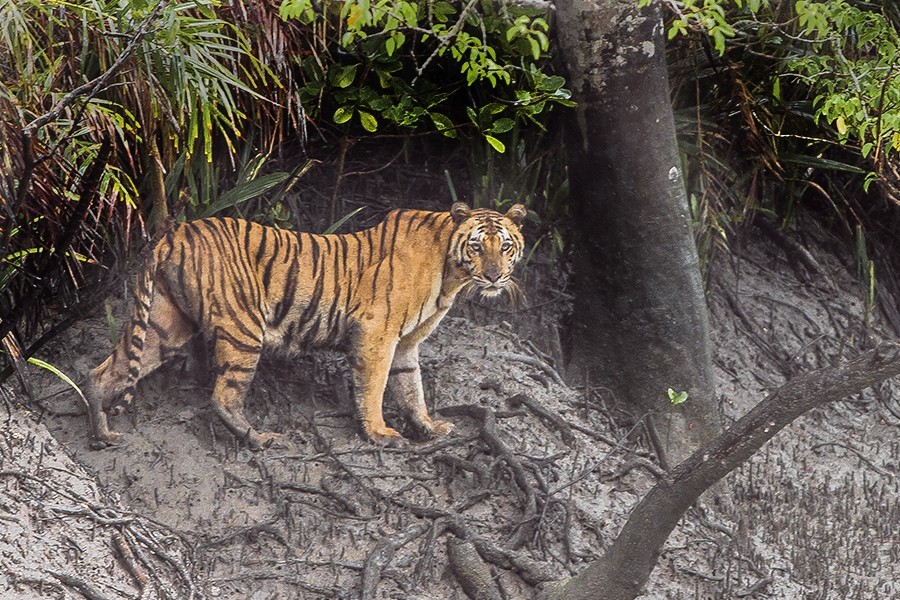In December 2022, a United Nations (UN) biodiversity meeting, formally known as the Conference of the Parties (COP) to the Convention on Biological Diversity (CBD) was hosted by Canada in Montreal. In this recent-most assembly (COP15), 188 governments approved their plans called 'Kunming-Montreal Global Biodiversity Framework' (GBF). It has four Goals and 23 Targets to be achieved by 2030 to save the world's biodiversity, which is disappearing tens to hundreds of times faster than the last 10 million years. The major elements of the GBF include protecting 30 per cent of the world's lands and waters, cutting back harmful government subsidies by US$500 billion annually, and reducing global food waste by 50 per cent.
Another important aspect of this framework is a few new mechanisms to gradually reduce the global conservation finance gap of US$700 billion per year. The proposed steps include (i) channelling US$200 billion annually from public and private sources; (ii) raising the yearly fund flow from developed to developing countries to US$20 billion by 2025 and US$30 billion by 2030; (iii) establishing a Special Trust Fund (GBF Fund) through the Global Environment Facility; and (iv) establishing a multilateral fund to improve equitable access and benefit sharing from genetic resources by using digital sequence information.
The situation is however a bit different for Bangladesh's conservation funding. In the Fourth National Report to the CBD in 2010, Bangladesh estimated BDT 2.52 billion requirement to implement the Biodiversity Programme of Action 2020. The Fifth National Report in 2015 summarised the past five years' progress in conservation without noting any expenditures.
According to the latest Sixth National Report (2019), Bangladesh invested BDT 6.99 billion during 2015-2019 in conservation through the Ministry of Environment, Forest and Climate Change (MoEFCC) and its departments. The Bangladesh Country Investment Plan for Environment, Forestry and Climate Change (2016-2021) estimated funding requirement for biodiversity and natural resource management to be US$2.46 billion with US$1.82 billion or 74 per cent funding gap. Moreover, in the last seven years, conservation and management plans were prepared for vultures (2016-2025; BDT 0.12 billion), tigers (2018-2027; BDT 1.28 billion), elephants (2018-2027; BDT 2.49 billion), and dolphins (2020-2030; BDT 1.57 billion). But no data is publicly available on the progress of financing or implementing these plans.
As the GBF is now endorsed by the world leaders, Bangladesh can do five things to expedite its conservation finance. First, the MoEFCC should work with the Finance Division to estimate how much money Bangladesh allocates to and spends on biodiversity conservation every year. Bangladesh's experience of preparing climate and gender budgets should be useful here. Such an exercise can be part of the forthcoming 2023-2024 budget preparation. This estimation can later be expanded beyond public conservation interventions and includes actions by national, international and multilateral agencies.
Second, Bangladesh's short (e.g., Eighth Five-Year Plan), medium- (e.g., Mujib Climate Prosperity Plan), and long-term (e.g., Bangladesh Delta Plan 2100) national and sectoral plans have identified numerous activities and projects which can directly improve the country's biodiversity. Bangladesh Forest Department can collate these actions and resources required. While doing so, they need to look beyond plant-animal conservation and management of protected areas and Ecologically Critical Areas (ECA) by the MoEFCC's departments, and should consider actions by departments of fisheries, livestock, agriculture, local government, disaster management, and water resources, for example.
Third, the ECA Management Rule 2016 (Article 23: 'Ecosystem Management Fund'), the Protected Area Management Rule 2017 (Article 29), and the Bangladesh Biodiversity Act 2017 (Article 36: 'Biodiversity Conservation Fund') have provisions for creating new funds. The MoEFCC should establish an expert committee to recommend how these options can be linked with the funding mechanisms of the GBF to strengthen Bangladesh's conservation finance in the form of new 'Bangladesh Conservation Fiscal Framework' (BCFF).
Fourth, the MoEFCC should establish 'Bangladesh Conservation Portal' (BCP) and bring together the above three outcomes. This portal will be a repository of country's recent-past, ongoing, and future conservation initiatives in line with our national plans, existing funding pots, and future financing mechanisms. This portal will track Bangladesh's progress in conservation similar to the SDG Tracker (sdg.gov.bd), make the reporting to the CBD easier, and help donors to prioritise channelling conservation money.
Finally, we need evidence-guided funding for conservation. We need evidence that the problems we are dealing with are well understood, the applicants have proven capacity to implement proposed activities, and the assumptions, actions, and envisaged outcomes make sense. It is also important that conservation projects gather evidence through regular monitoring and evaluation, learn from these to improve own operations, and eventually make the lessons publicly available to mainstream the best practices. The on-going catastrophic level of biodiversity loss and ecological degradation demands large-scale conservation action. Small-scale, disjointed piloting is no longer an option. Sufficient, urgent, and effective funding is therefore crucial. Can Bangladesh lead developing countries on conservation finance through actions proposed above?
Dr. Haseeb Md. Irfanullah is an independent consultant working on environment, climate change, and research systems.


